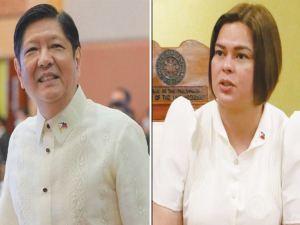The Philippine peso yesterday continued to depreciate, closing at P51.77, as the dollar firmed on the perception that an “anti-inflation hawk” will be appointed as the next Federal reserve governor.
The peso’s closing level yesterday was the lowest since July 25, 2006 when it closed at P51.87 to the dollar. It was also 0.33 lower than the previous day’s close of P51.44.
Traded volume reached $773 million, more than $200 million more than the previous day’s total of $551.2 million.
Most emerging Asian currencies also weakened yesterday as the dollar index, which tracks the greenback against six major currencies, rose as much as 0.25 percent to 94.008.
But Nestor Espenilla, Bangko Sentral ng Pilipinas Governor, said he is comfortable with the current level as the depreciation is still “moderate and gradual.”
“The exchange rate is a policy instrument of the BSP not a target. So it is allowed to move flexibly in line with global external and domestic shocks,” Espenilla said.
Espenilla said “fears and uncertainties in the world are reflected in the day to day volatility of the exchange rate.”
“We allow it to reflect that because that is the reality the economy operates under. The BSP does do tactical intervention to keep the volatility not excessive… Of late the peso has been depreciating. I’d like to think moderately and gradually,” Espenilla said.
Espenilla said allowing the peso to depreciate “is part of the adjustment mechanism.”
“Examine the alternative if we have to react to exchanges. So what are the tools of the BSP? You want us to jack up interest rate? That has a bigger economy-wide impact. So our interest rates are focused on inflation. So if the foreign exchange is already beginning to influence inflation in a way that makes us breach our target, then that may warrant a response from the BSP. But I said we have other tools. We’ve got a big (foreign exchange) reserves that we use for tactical intervention,” Espenilla said.
As the country’s inflation environment is expected to remain manageable over the policy horizon, the policymaking Monetary Board last month kept steady the key rates of the BSP at 3 percent. The corresponding interest rates on the overnight lending and deposit facilities were also kept steady. The reserve requirement ratios were likewise left unchanged.
The rates have been maintained since September 2014.
Espenilla said that in the policy approach of the BSP, they have multiple tools to deal with multiple objectives.
“For the primary objective of the BSP of keeping inflation low and stable, we have our inflation targeting framework and that framework is the one that drives the calibration of our policy interest rates. Our policy interest rates primarily depend on our evaluation of the inflation path not yesterday but going forward that now extends two years ahead 2019,” Espenilla said.
Joey Cuyegkeng, ING Bank Manila’s senior economist, said aside from external developments specifically market fear of a more hawkish US central bank in 2018, yesterday’s recent drop in the value comes from market perception that there will be no monetary policy support anytime soon.
Also affecting the decline are concerns that structural inflows would not cover the wider trade deficit this year and market perception of economic policymakers tolerance of a weaker peso.
ByJimmy Calapati, Malaya








